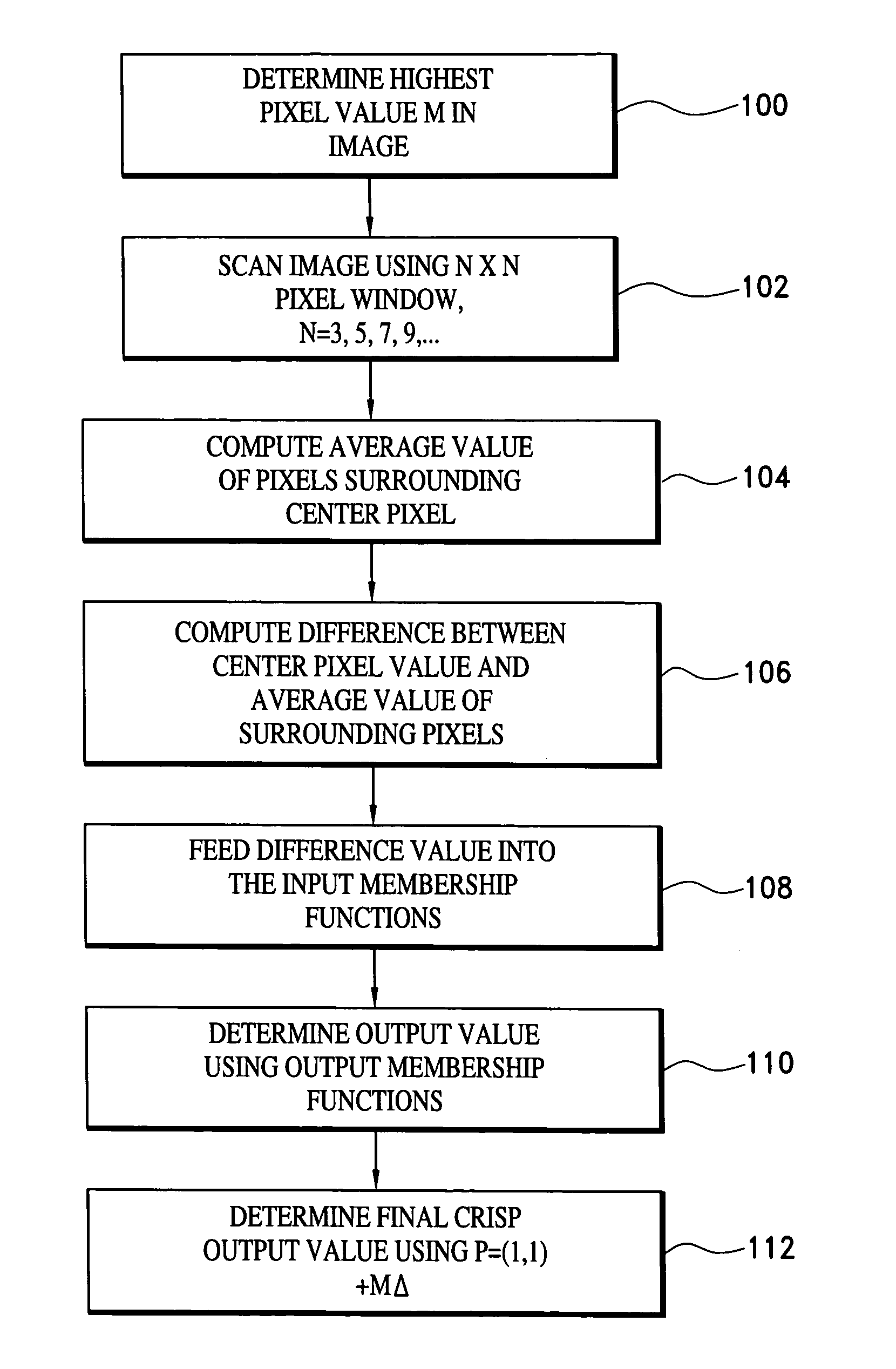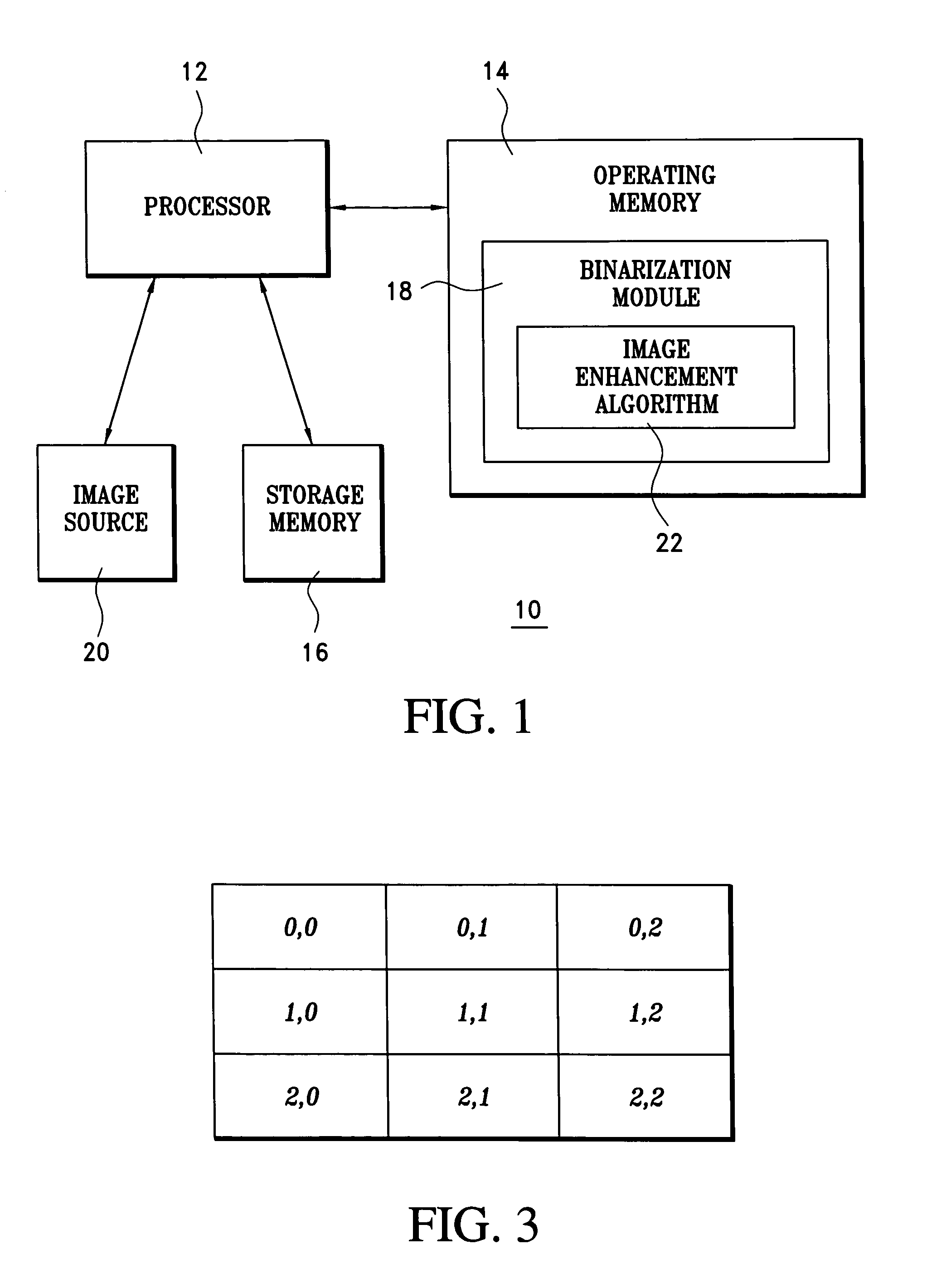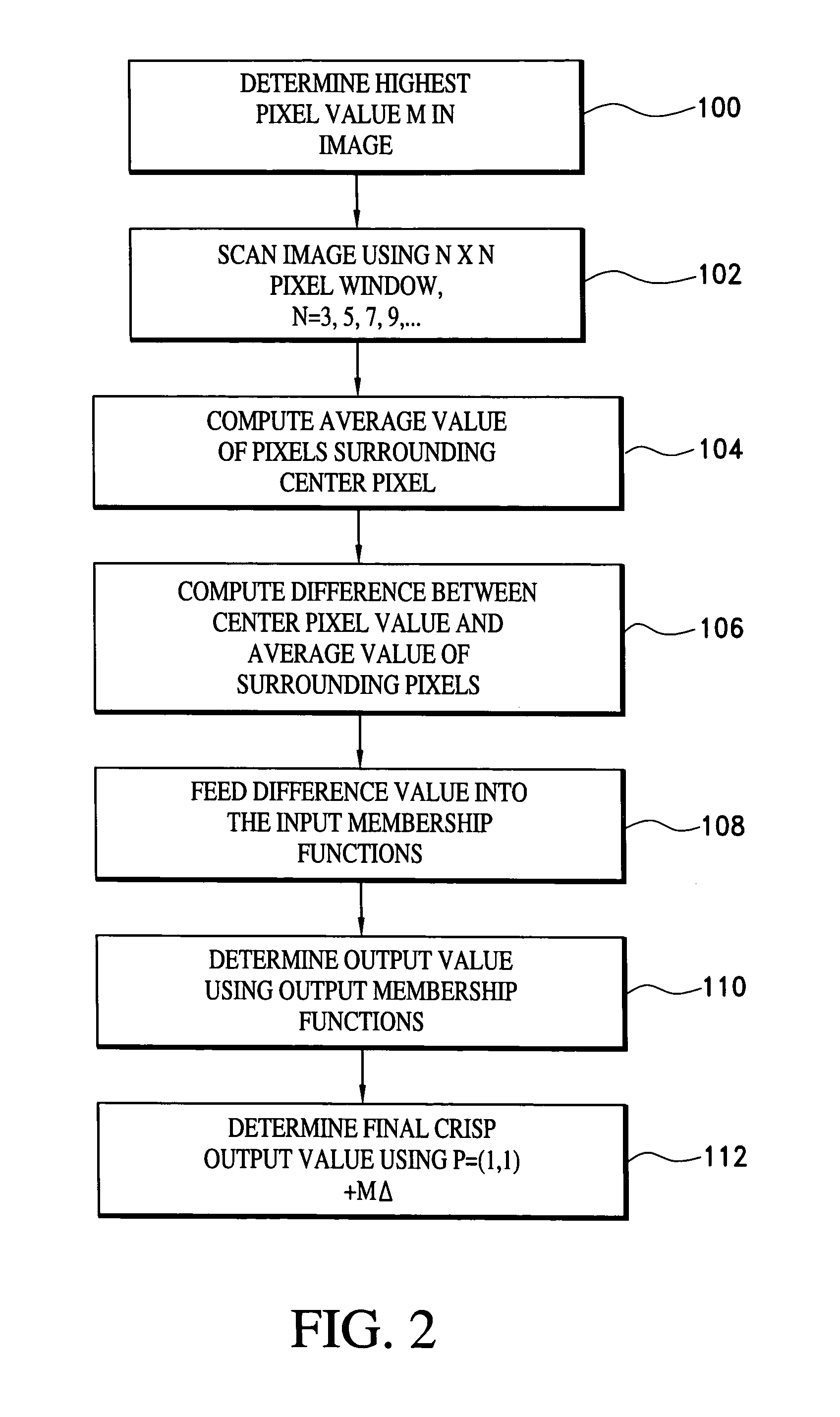Image processing for binarization enhancement via fuzzy reasoning
a fuzzy reasoning and binarization technology, applied in the field of image processing for binarization enhancement via fuzzy reasoning, can solve problems such as insufficientness
- Summary
- Abstract
- Description
- Claims
- Application Information
AI Technical Summary
Benefits of technology
Problems solved by technology
Method used
Image
Examples
Embodiment Construction
[0023]With reference to FIG. 1, a computer system 10 is illustrated which is configured to convert multiple bit gray-scale digital images into binary images using any suitable technique, such as the image thresholding technique disclosed in copending U.S. application Ser. No. 10 / 779,551, filed Feb. 11, 2004 and which is referred to as Fuzzy Reasoning Adaptive Thresholding (FRAT). The system 10 includes a processor 12 which is interfaced to an operating memory 14 and a storage memory 16, as is conventional. Loaded into the operating memory 14 is a binarization program or software module 18.
[0024]Gray-scale images to be converted to binary are either retrieved from the storage memory 16 or from an external image source 20 and are fed into the binarization program 18, which performs the conversion. To accomplish this, the binarization program 18 includes an image enhancement algorithm or subroutine 22 that preprocesses the gray-scale images before they are converted to binary. Each gra...
PUM
 Login to View More
Login to View More Abstract
Description
Claims
Application Information
 Login to View More
Login to View More - R&D
- Intellectual Property
- Life Sciences
- Materials
- Tech Scout
- Unparalleled Data Quality
- Higher Quality Content
- 60% Fewer Hallucinations
Browse by: Latest US Patents, China's latest patents, Technical Efficacy Thesaurus, Application Domain, Technology Topic, Popular Technical Reports.
© 2025 PatSnap. All rights reserved.Legal|Privacy policy|Modern Slavery Act Transparency Statement|Sitemap|About US| Contact US: help@patsnap.com



